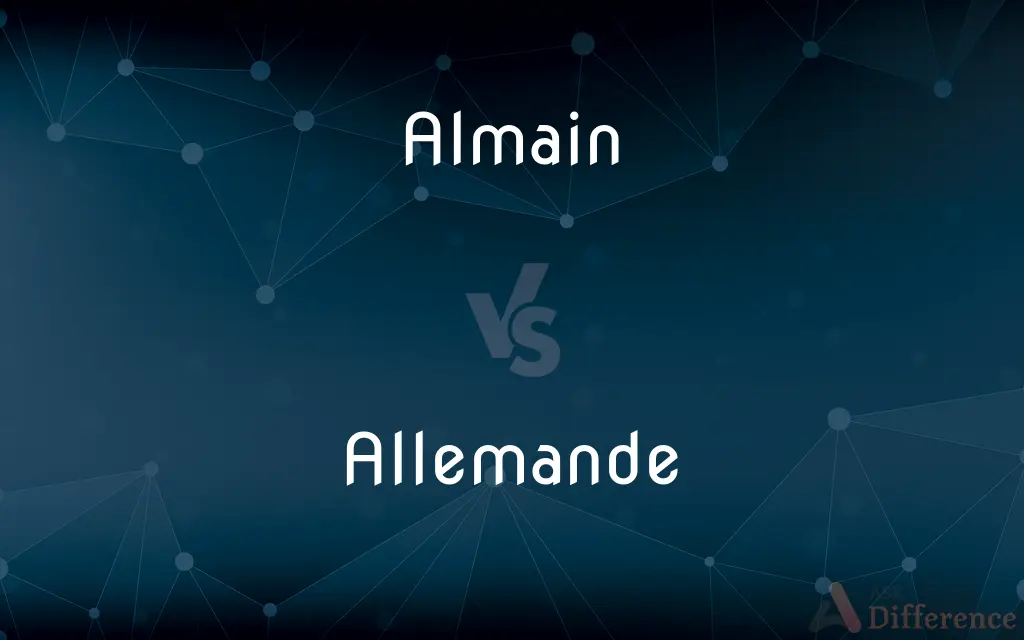Almain vs. Allemande — What's the Difference?

Difference Between Almain and Allemande
ADVERTISEMENT
Compare with Definitions
Almain
A German.
Allemande
An allemande (allemanda, almain(e), or alman(d), French: "German (dance)") is a Renaissance and Baroque dance, and one of the most common instrumental dance styles in Baroque music, with examples by Couperin, Purcell, Bach and Handel. It is often the first movement of a Baroque suite of dances, paired with a subsequent courante, though it is sometimes preceded by an introduction or prelude.
Almain
The German language.
Allemande
A stately 16th-century dance in duple meter.
Almain
A kind of dance. See Allemande.
ADVERTISEMENT
Allemande
(Music) The music for this dance, often used as the first movement of a suite.
Allemande
A lively dance of the mid-18th century in triple meter.
Allemande
A popular instrumental dance form in Baroque music, and a standard element of a suite, generally the first or second movement.
Allemande
To perform this dance.
Allemande
A dance in moderate twofold time, invented by the French in the reign of Louis XIV.; - now mostly found in suites of pieces, like those of Bach and Handel.
Allemande
A figure in dancing.
Allemande
Egg-thickened veloute
Share Your Discovery

Previous Comparison
Cave vs. Hole
Next Comparison
Metakaolin vs. Kaolin















































